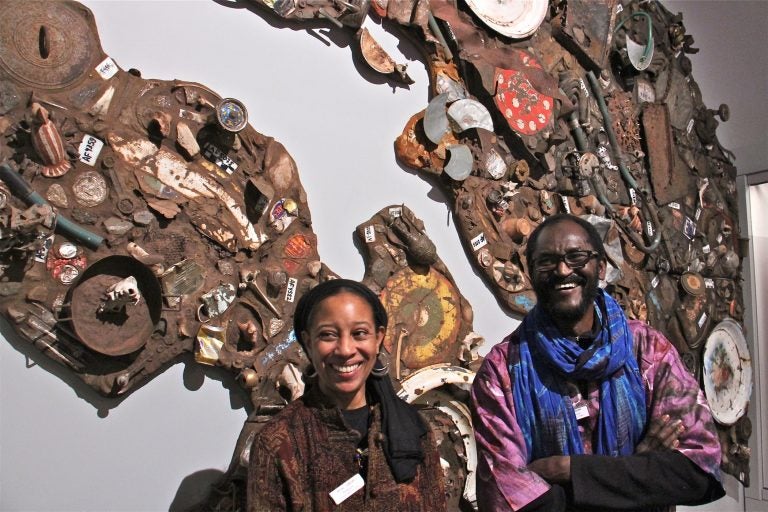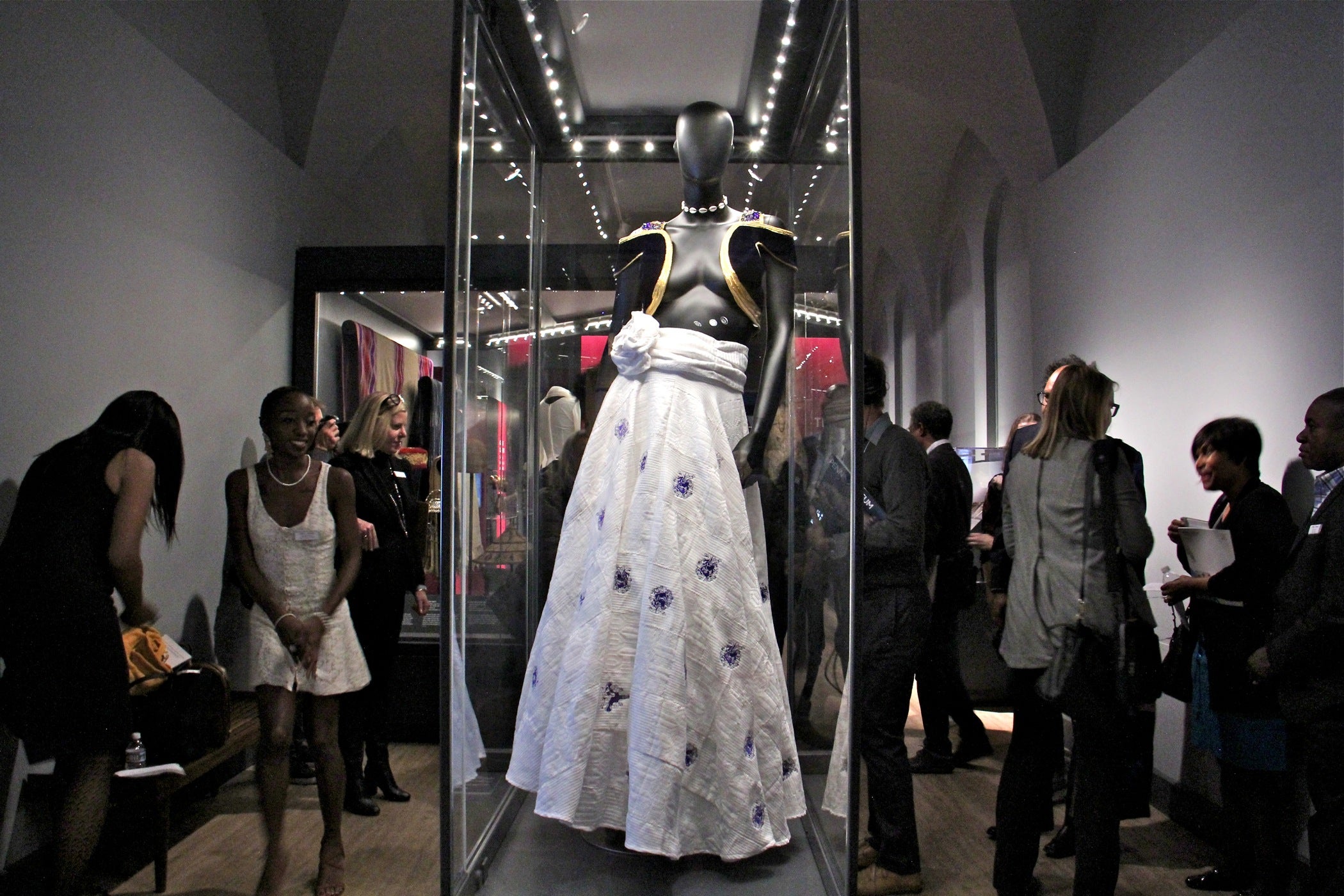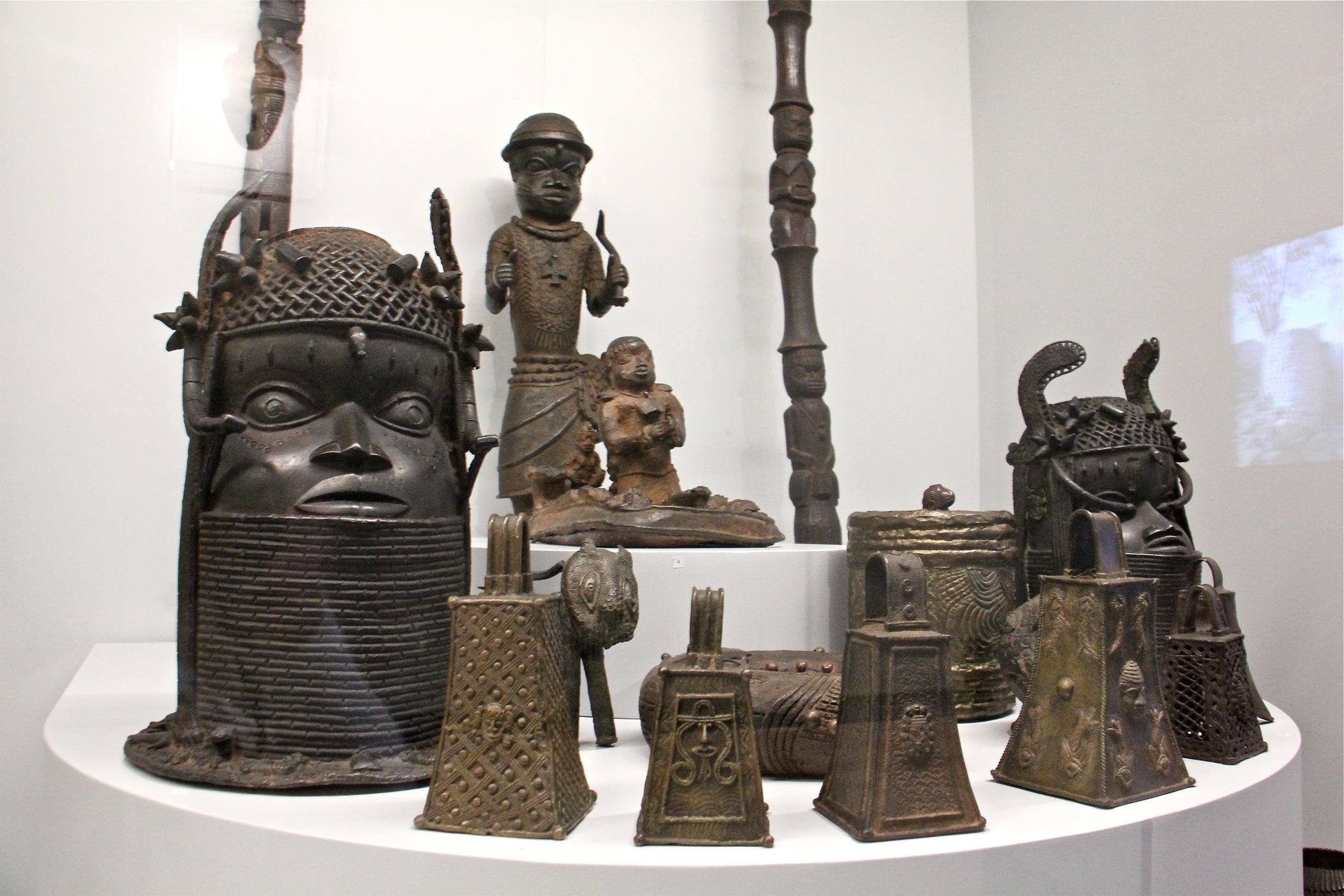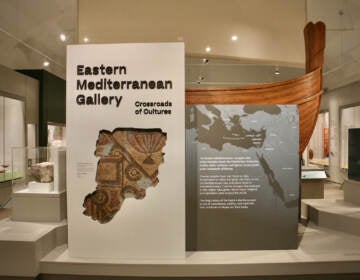‘This is not an old story’: Penn Museum reimagines its African, Central American galleries with a modern view
In its updated galleries, the Penn Museum asks hard questions about African cultural appropriation.

Artists Muhsana Ali and Amadou Kane Sy created "Presence of a Fundamental Absense" in response to the history of collecting at Western museums. (Emma Lee/WHYY)
The Museum of Archeology and Anthropology at the University of Pennsylvania was built in the 19th century. Now, it’s being reimagined for the 21st century.
A major renovation underway involves upgrading bathrooms, lighting, and accessibility. For the first time in 120 years, the museum has air conditioning.
Penn Museum is also updating the way it presents history — making connections to present-day cultures and explaining how artifacts ended up in Philadelphia. The ancient world, perhaps, is not as ancient as you think.
Museum director Julian Siggers walked through the new Central American gallery. What had been rather dark clusters of artifacts behind glass in an oversized hallway has been expanded by about a third. Upgraded floors and lighting show off newly presented stone monuments carved with Mayan hieroglyphs.
A projector opposite will throw lines of light onto the stone carving, pointing out specific figures and shapes that hold particular meaning, like constellations in the stone.
There are also examples of ancient weaving made with techniques still in use today, and works made by contemporary artists in response to those artifacts.
We wanted to get across a very important point, that these communities are still there. They are still thriving,” Siggers said. “People often assume with the ancient Maya that there are no contemporary Maya. There are.”
The new African gallery down the hall opens dramatically with a mannequin dressed in a full white skirt of African Kente cloth, topped with a short jacket made of velvet and edged with gold.
Fashion designer Breanna Moore and Emerson Ruffin embroidered the skirt with symbols that are carved into the surrounding ancient objects.

“We wanted to make it clear: this is not an old story,” said curator Tukufu Zuberi. “This way of using symbols, this way of representation through symbolic logic is not something of the past. It’s also of the present.”
Zuberi took the bold step of not just rethinking African artifacts, but rethinking how Africa is regarded by Western museums.
Significant space is given to objects of the Benin Palace, in what is now Nigeria. In 1897, the British invaded and pillaged the palace of its objects, which were then sold onto the global art market. Some of them wound up at the Penn Museum.
“We ask: Why are these objects here? How did they get to here? And what does it mean that we have them here?” Zuberi said.
“These items are here as a consequence of that dislocation in Africa,” Zuberi said. “When I talk to museum curators and directors in Nigeria and Benin City, about putting together this gallery the way we’ve put it together, they say, ‘You must do that. You can’t hide our objects in your collections. You need to bring that truth forward.”
On the wall behind the Benin artifacts is a mosaic of found objects. Taking cues from the work of Isaiah Zagar, artists Muhsana Ali and Amadou Kane Sy collected broken pottery, crushed cans, doll heads, bicycle parts around their rural home in Senegal, brought them to Philadelphia, and embedded them in large rounded pieces of dirt-colored cement. They roughly form the shapes of continents.

The artists were inspired by a carved elephant tusk in the museum’s collection, once part of an altar in the Benin Palace. While pouring over its intricate shapes and figures, they discovered a small rectangle of discoloration. A sticker with an identifying archival number had left a faint mark behind.
“The sticker fell off, and the shape that remained was the shape of the world,” Kane Sy said.
The sticker removed the power of the tusk. The once-spiritual object was removed from its altar, given a number, and shipped to the other side of the world. It was then eventually purchased.
In their wall assemblage, Ali and Kane Sy recreated archival stickers, randomly embedding them amid the rusted and crushed objects in the brown cement.
If you look carefully, you can find the wall assemblage’s number. As a commission by the Penn Museum, it was given its own archival identifier.
WHYY is your source for fact-based, in-depth journalism and information. As a nonprofit organization, we rely on financial support from readers like you. Please give today.





